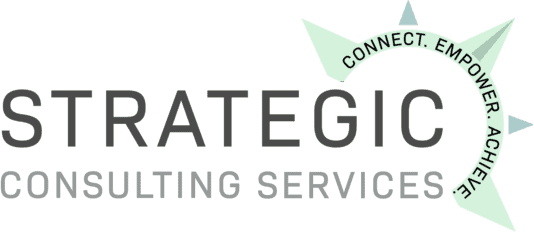The American Disabilities Act (ADA) makes it possible for people with disabilities, including people with alcohol use disorder (AUD), to enjoy the same rights as everyone else. These protections also extend to people who have an opioid use disorder (OUD) or other substance use disorder (SUD).
To understand the scope of your rights, when treating substance abuse, you need to learn more about how the ADA covers and protects the rights of people with addiction problems.
The ADA safeguards the rights is disabled people, including those with addiction issues, defining the responsibilities of caregivers and others who are communicating with people who have substance use disorders.
The legislation outlines three titles – titles that form the framework for the ADA: Title I, Title II, and Title III.
Title I: Title I focuses on employment – or providing reasonable accommodations for employees.
Title II: Title II addresses access to state and federal programs, or activities related to public education, judicial decisions, and corrections.
Title III: Title III covers access to goods and services at health care sites, private businesses, or in sober homes that serve the public.
How the ADA applies its measures to alcohol addiction or illegal drug use is explained below.
What Is the ADA’s Definition of a Disability?
Under the ADA, a person has a disability if the following applies:
- They have a mental or physical impairment that significantly restricts them from taking part in one or more major life activities. This may include an alcohol addiction, bi-polar disorder, or a condition like diabetes.
- The individual has a medical history of impairment – a condition that has significantly limited them in taking part in a major life activity. For example, if a person falls under this classification, they may be taking part in a drug or alcohol recovery program or may have a history of cancer.
- If the person is regarded as having an impairment. In this case, a person may qualify if they have a loved one with HIV, for example, and therefore are assumed to have the condition too.
This may lead you to wonder how a major life activity is defined.
What Are Examples of Major Life Activities?
Major life activities may include walking, self-care, thinking, learning, working, and communicating. Major life activities include the normal operation of bodily functions (including the brain and neurological system).
If you have a substance use disorder, it is considered an impairment or disability, as it affects your brain and neurological functioning.
How the ADA Protects Workers with Substance Use Disorders
Let’s look at some scenarios where the ADA can be applied.
Assistance with treatment: Jillian is frequently late for work. She has been warned about her ongoing tardiness. She tells her supervisor that she is struggling with an alcohol use disorder (AUD) and that is why she is regularly late. She should be provided immediate time off to get help for her addiction.
In this case, Jillian is protected under Title I of the ADA. While an employer does not have to withdraw any written warning or grant accommodation, they must, under the law, allow Jillian to take time off work and get treatment. Unless the employer can show that Jillian’s absence would result in undue hardship to the company, they must grant the request.
An Employment Reassignment: If your SUD leads you to a job reassignment–one with lower pay–you’re also protected under the ADA, especially if you have not had any employment-related difficulties. While the employer is regarding their employee as having a disability, they have violated ADA law by assigning their employee to a job with reduced pay.
Illegal Drug Use and Recovery: The ADA safeguards an employee in recovery who is no longer using illegal drugs who shows that they meet one of the definitions for a disability.
How Illegal Drug Use is Defined: Using illegal drugs means using an illegal narcotic like cocaine or heroin. It may also include using a prescription medication, like Oxycontin or morphine, where the user does not have a prescription or is using a larger dose than what they’re prescribed.
How Recovery is Defined
Recovery from a drug means that a former drug or alcohol user is recovering from a substance use disorder (SUD), has stopped using illegal drugs, is taking part in rehab, or has gone through rehab successfully.
How the ADA Protects an Employee in Recovery
If you have been free of drugs for a while and are not hired for your past drug use, you are also covered under the ADA. That’s because, legally, you have a history of an impairment (or an addiction to a drug), but have not used the drug for a long time. If you’re not hired for this reason, the employer is breaking the law and violating your rights.
Medicines Used to Treat Substance Use Disorder: How the ADA Protects You
In some cases, people with drug or alcohol addictions are prescribed drugs like methadone or suboxone.
You are protected under the ADA, in this case, as you’re being prescribed a drug to treat your SUD. Therefore, the drug you’re receiving is not illegal. You can enjoy certain rights then, such as seeing your children if you’re divorced, as you’re undergoing treatment for a past addiction.
The ADA covers you for your addiction and drug use as long as you’re taking a drug that is legally prescribed and are taking the required dosage.
Also, the law will protect you if you take a prescribed medicine in the prescribed amounts but end up getting addicted. Again, you’re not afforded this protection if you take more than the prescribed amount.
Final Thoughts
Understanding your rights under the ADA gives you a foundation for tackling a drug or alcohol addiction problem and getting the help you need. As long as you get treatment or recognize that you need some type of intervention, you can move forward successfully.
Strategic Consulting is Your Partner in Managing ADA Issues
Our team is here to help with your disability accommodation issues, vocational rehabilitation needs, ergonomic evaluations, and other employee needs.
For twenty years, we have been helping companies in the Pacific Northwest with worker injuries, disabilities, and other vocational challenges. We are here to support you in this unprecedented era of remote working and WFH.
We have partnered and provided solutions to some of the largest companies in the world (such as Boeing, Microsoft, and Amazon). But, at our core, we are still “people taking care of people,” one project at a time. Our success is built upon and providing you the best solution to your workplace challenge. Contact us today by filling out a form (below), submitting a referral, or visiting our ‘Contact Us‘ page to find your nearest office.
Ric has been working in the industry since 2002, specializing in developing employer jobsite analysis and light duty programs, ergonomics consultations and adjustments, disability accommodations and providing effective return to work solutions. Ric is Matheson trained in Ergonomics and is a Certified Ergonomics Evaluation Specialist. He earned a Bachelor of Arts Degree in Psychology from Western Washington University and later his Master’s Degree, M.Ed., Education Counseling from Seattle Pacific University. Ric is currently a Registered Vocational Rehabilitation Counselor for the Department of Labor and Industries and has been a Certified Disability Manager Specialist since 2006.

